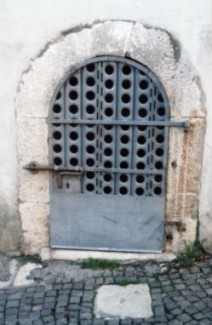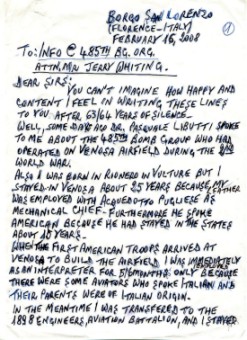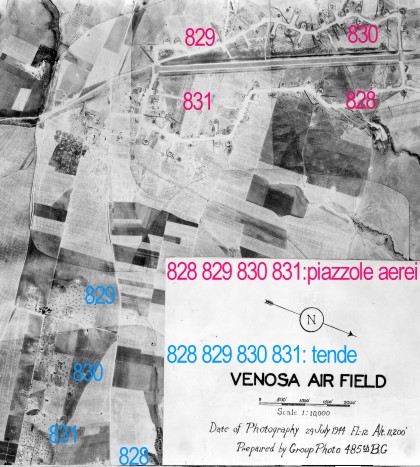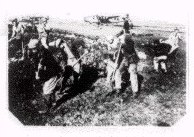









          |
|
|
|
|
|
First contact |
||
|
|
|
|
|

|
|
|
|
|
|
|
|
||
|
|
|
|
|
|
||
|
|
|
|
|
|
|
 |
|
|
|
|
|
|
||
|
Here lies a rusted quonset, known as the "hangar": It belongs to the base,
even if it is much too small for a B-24. We identify the runway and the pits
of the airplanes, and understand why it is all visible from the satellite.
On the track of the runway, tons of river stones have been unloaded onto it
in order to render it more compact; people tell stories that it took three
months to build the runway. The grain grows with difficulty through the
white stones, therefore from the satellite images the runway appears clear.
Nothing else has been conserved: many war surpluses were removed in order to
cultivate the fields, including cartridge cases and other (Alberto’s father
once found an airplane bomb in the nearby fields, and immediately
informed the base personnel...).
Our inspection appears disappointing;
perhaps the tent camp area is saving surprises for us. The tent camp can
be double checked on the maps, so I decide not to jump ahead and wait for
that inspection. Our friends Jerry Whiting and Mary Ann Gworek will arrive
in a few days and we will go there together: from a certain
point of view, it is a place that belongs more to them than us, it is right
like this.
|

|
||

|
|
||
|
|
|
|
| Pierced Steel Planking: the gates of the war | |||
 |
|||
| HOME | Pierced Steel Planking: the gates of the war | 15th USAAF, Airfields in Apulia | |
| Thanks to the 485th BG Vets | First contact | Old ties | |
| Mount Vulture, Old Sawtooth | Life at the Venosa Airfield during World War II | The kids of Venosa and the airmen | |
| Bombs Away, the magazine | With the eyes of the children | 2008: impressions | |
| 2008: return to the base | Bibliography & Links | INFO | |
|
|
|||
|
Search and texts: Pasquale
Libutti
rapacidiurni@gmail.it
Page
connected to www.storiedelsud.altervista.org
|
|||